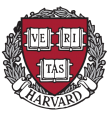Requirements to pursue Medicine
Build Profile while Pursuing High School

Strong Academic Foundation
Focus on acing in core science and mathematics courses (biology, chemistry, physics, calculus).
Explore Your Passion
Doctor shadowing, volunteer at hospitals or clinics, and engage in relevant extracurricular activities like science clubs. NGO or research projects. These experiences will help you gain valuable insights into the medical field and demonstrate your commitment.

Selection of the Right Undergraduate Degree Program

Select a Pre-Med Major
Popular pre-med majors include biology, biochemistry, and chemistry which align and build a strong foundation for the MD program.
Shortlisting Universities
Look for universities that can prepare you to increase your chances of admission in the MD program For example The University of Chicago gives early access to their pre-med students to Chicago Medical Centre to obtain research and clinical experience.
Prepare for the MCAT
Start preparing for the Medical College Admission Test (MCAT) early in your pre-med degree. As per experts, it can take 300 to 500 hours of preparation. This rigorous exam evaluates critical thinking, scientific knowledge, and problem-solving abilities
Build a Competitive Application
Maintain a high GPA of 3.3 or above, participate in research, and gain meaningful clinical experience.

The Application Process

Entrance Tests
The SAT is vital in gaining admission to undergraduate pre-med programs in the United States. A competitive score, generally around 1200, is typically required. However, the primary determinant for medical school acceptance is the Medical College Admission Test (MCAT) after a Pre-med degree. A strong MCAT score, exceeding 510, significantly enhances the likelihood of admission to top-tier medical schools.
Personal Statement and University Essays
Craft a compelling personal statement / essays that highlights your unique motivations for pursuing medicine, your personal and professional goals, and the experiences that have shaped your desire to become a physician.
Letters of Recommendation
Obtain strong letters of recommendation from teachers, mentors, or physicians who can attest to your academic abilities, character, and potential.
Extracurricular Activities
Community work experience and contributions in volunteer work, research, or leadership roles illustrate well-roundedness and commitment to the field.
Interviews
Prepare for potential interviews by practicing your communication skills and researching the medical schools you're applying to.














